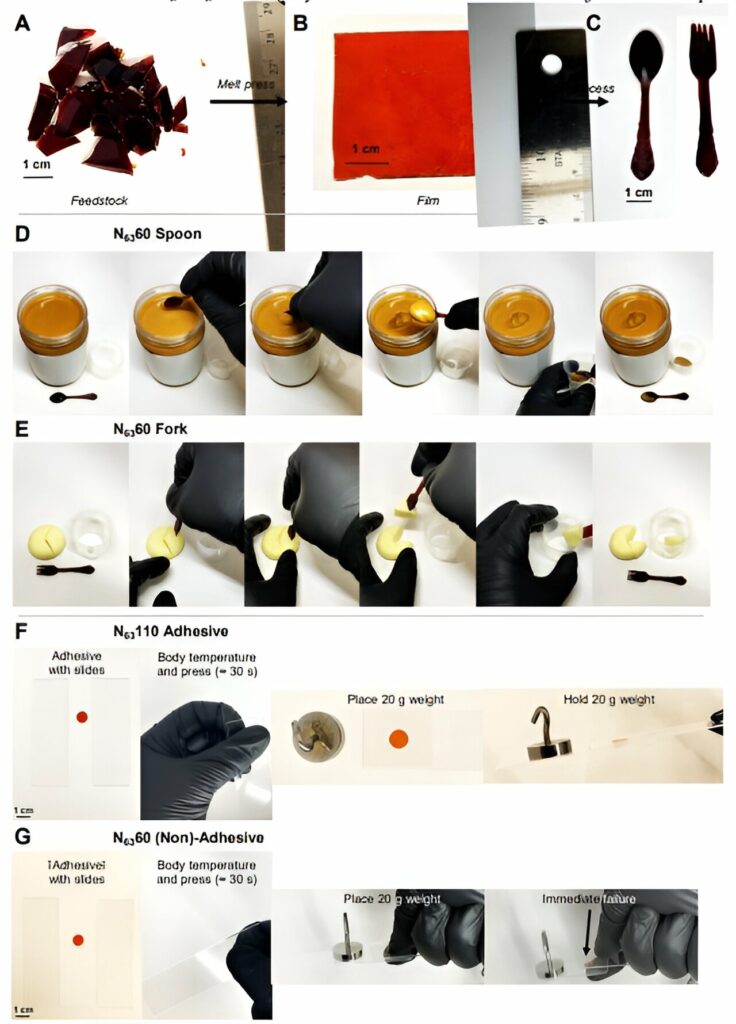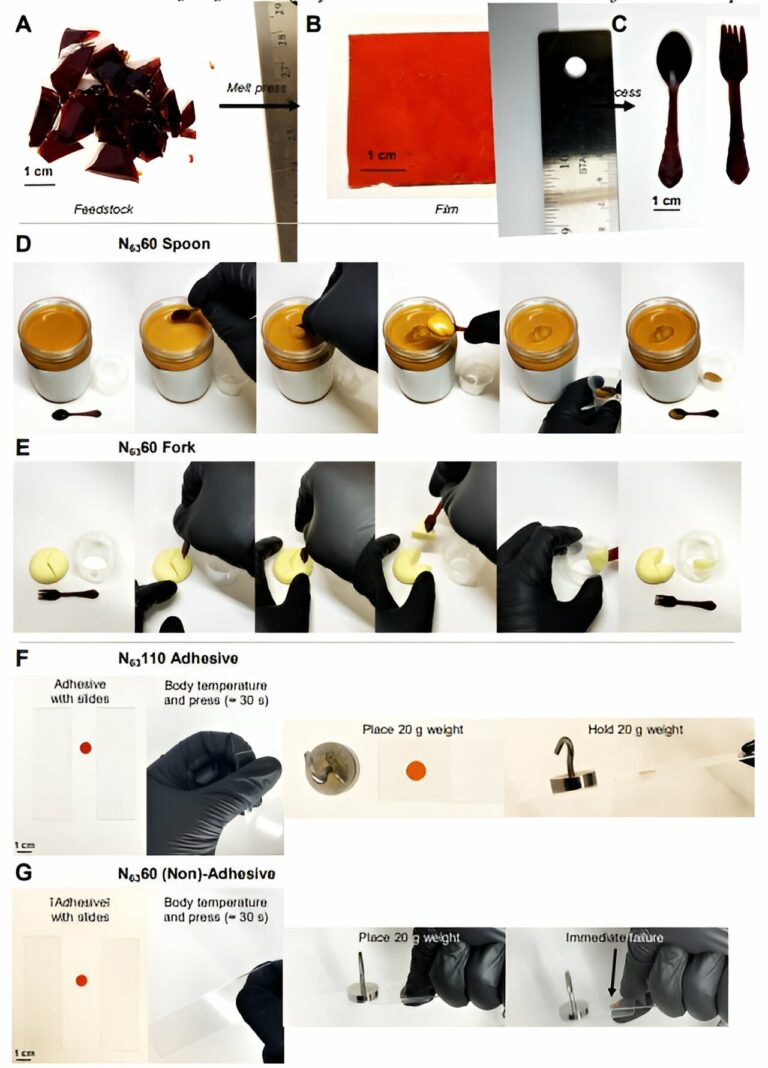A Plastic Variety Capable of Shape-Shifting Through Tempering
A group of molecular engineers have successfully created a unique form of plastic that has the ability to change its shape through the process of tempering. Their findings were published in the prestigious journal Science, with contributions from the University of Chicago, the US DEVCOM Army Research Laboratory, Aberdeen Proving Ground, the National Institutes of Standards and Technology, and the NASA Glenn Research Center. The team detailed the development of the plastic and its impressive shape-shifting capabilities when subjected to different tempering techniques.
In a related Perspective piece within the same issue of Science, Haley McAllister and Julia Kalow from Northwestern University provided further insights into the research.
In recent years, the detrimental impact of plastic on both the environment and human health has become increasingly apparent. Plastic particles have been discovered in soil, the atmosphere, oceans, and even within the human body.
Consequently, scientists have been actively seeking ways to minimize the production, usage, and disposal of plastic. In this groundbreaking study, the research team has successfully engineered a type of plastic that can be transformed into a new object once its initial purpose has been fulfilled, thanks to the process of tempering. For instance, a plastic bag used for storing food could be converted into a functional fork or spoon.

To enable this remarkable shape-shifting ability, the scientists developed a unique plastic using a dynamic cross-linked approach, utilizing the reversible addition of thiols to benzalcyanoacetates, a process known as a “Michael addition.” The resulting plastic possessed the necessary properties to be modified through tempering, a technique commonly associated with metalwork, involving heating the material to a specific temperature and rapidly cooling it down.
Overall, this groundbreaking research offers promising solutions to the plastic waste problem by introducing a plastic that can be repurposed and reshaped, reducing the environmental and health hazards associated with traditional plastics.
The scientists discovered that by subjecting the plastic to temperatures ranging from 60°C to 110°C and subsequently placing it in a conventional food freezer, they were able to produce various objects using the same material according to their preference.
Initially, they crafted a spoon that served the purpose of scooping peanut butter from a jar. They then employed a tempering process to transform the spoon into a fork, and subsequently into an adhesive substance capable of securely holding two panes of glass together. However, experiments revealed that there was a limitation to the number of times the plastic could undergo these changes, which was determined to be seven times. Beyond that threshold, the plastic began to deteriorate.
This article is republished from PhysORG under a Creative Commons license. Read the original article.
Do not forget to share your opinion with us to provide you with the best posts !





0 Comments